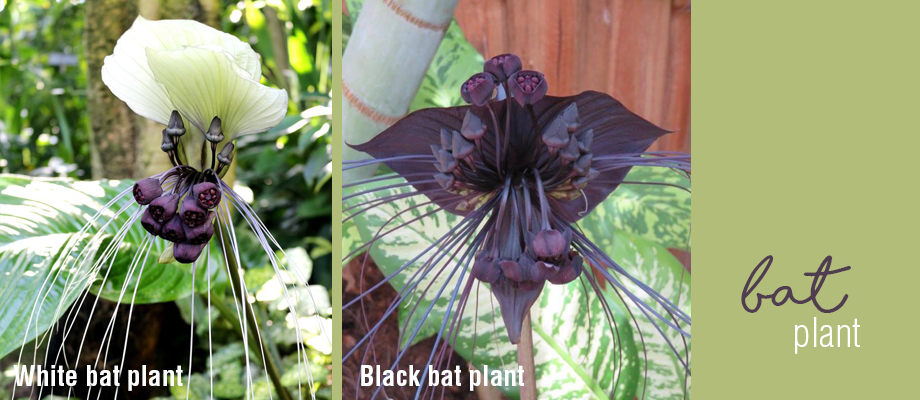|
What is this plant flower flying about in our gardens this summer? The Black Bat Plant (Tacca chantrieri) displays exotic black, brown or purplish flowers resembling a bat’s face typically in late spring and through summer. When not in flower their lush, lance shaped leaves half a metre long will dramatically fill up a shaded area in the garden or indoors as a feature. The white variety, Tacca integrifolia, is equally stunning although known to be a little fussier but don't let that deter you, these plants are rewarding to grow.
Black Bat Plant is a true shade lover. They grow naturally in the damp and dark under-story of tropical rainforests. They grow under the shade of trees well. If grown indoors, position Bat plants in a warm, indirect sun lit area.
Black Bat Plants need good soil and regular moisture. They love a high humidity microclimate. The soil should stay lightly moist all year round, keeping in mind to prevent waterlogging as the rhizomes will rot easily. Provide regular water in the hot months but allow them to dry out somewhat in winter, especially when it’s cold.
They can be tricky to grow, so ensure your soil is well draining and regularly composted. For pots, plant in a peat-moss based potting mix such as Platinum Potting Mix which holds the moisture in the soil without waterlogging.
Fertilise regularly and lightly during the growing and flowering season. Liquid fertiliser fortnightly with Searles Flourish Flowers and Foliage Soluble Plant Food at the 'Indoor Plant' rate.
Bat plants can be germinated from seed, but it is easier to divide plant rhizomes and replant yearly. Divide and separate rhizomes in Autumn after flowering. Divide the rhizomes into clumps, using a sharp knife. Replant the rhizomes, spacing them three to four feet apart. Bat plant will grow happily for many years.
Thanks to Ann Fisher and Maylene Rudan for sending in their bat plant beauties. We think they are stunning.
|
 |






